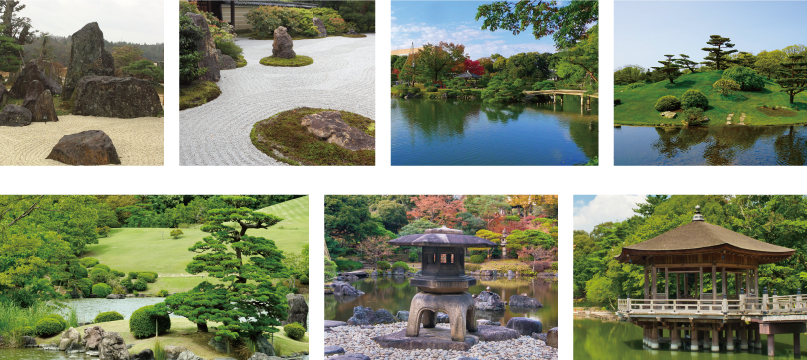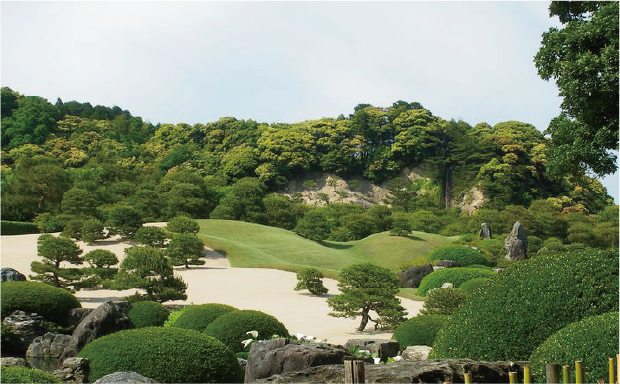What is a Japanese garden?


A Japanese garden is a garden that condenses nature such as mountains, waterfalls, rivers, and the sea to express a miniature view of nature.
We build "Tsukiyama" to make the best use of the undulations of the land, create the flow of the "river", express mountains with natural "garden stones" around the "pond", and place "plantings" there to represent the seasons. In addition, lanterns, tsukubai, pavilions, and teahouses will be placed to create a view that can be appreciated from season to season.


In addition, the technique of borrowing scenery from outside the garden as well as inside the garden is also widely used. (Adachi Museum of Art photo)

Difference between Japanese gardens and Western gardens


Japanese gardens, which aim to fuse with nature, are created asymmetrically to imitate nature. On the other hand, Western gardens are designed symmetrically with the pavilion at the center of the entire garden. The arrangement of stones and plants in a Japanese garden is balanced as if they existed in nature, while in a Western garden, plants, stones, pathways, and monuments are placed in an orderly fashion, and fountains create beauty through human control of the flow of water.
There is a difference in the aesthetic sense of nature at the root of the two companies, whether they are aiming for a fusion with nature or for artificial beauty. The appeal of Japanese gardens lies in the fact that people create the peace of nature.
